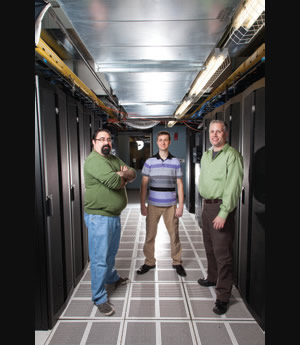Portland Public Schools Strikes the Right Image

Portland Public Schools saved money on shipping and labor and conserved storage space by utilizing a VPN and working with CDW. It also allows the IT Team to spend more time working to solve problems with teachers and students.
While Portland Public Schools enjoys a positive image in the community, the district was once challenged when it came to its computer images.
Ryan Whitman-Morales, director of technical operations for PPS, says it used to take up to four IT pros a few days to image new PCs using a cumbersome and laborintensive process. The staff created the images by hand and sent them to CDW via FTP server or by mailing DVDs. CDW technicians manually uploaded the images to new PCs before sending them back to PPS.
That changed a few years ago when PPS set up a site-to-site virtual private network (VPN) tunnel from its headquarters to CDW. Now PPS staff create images in Microsoft System Center Configuration Manager (SCCM) software, which transmits them to an SCCM server at CDW’s secondary configuration and distribution center in North Las Vegas, Nevada. CDW technicians load the images onto new PCs within minutes, apply the customer’s asset tag and then box and ship the hardware directly to the right PPS school where CDW’s third-party service provider unpacks and sets up the PCs. All the teachers need to do is set aside space for the new computers.
To get started the district upgraded from its old network to Microsoft Active Directory and then SCCM. Next, PPS upgraded the bandwidth to accommodate the additional technologies, explains Jonathan Vail, user experience management lead for PPS, who worked with CDW to configure the VPN tunnel using Cisco ASA appliances.
“This new setup saves the district hundreds of thousands of dollars a year in labor and shipping costs and storage space. We no longer have to store computers on pallet after pallet,” says Whitman-Morales. “Plus, it lets our IT team spend more time out in the field working with teachers and students where they can be most useful.”
www.cdwg.com
This article originally appeared in the issue of .